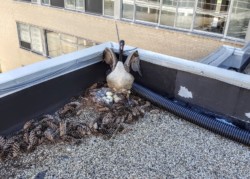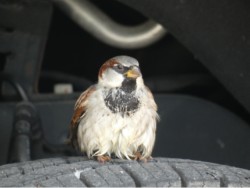Why Knowledge of Bird Behavior and Biology is Key to Effective Management of Bird Conflicts
Nov 12, 2021
At Wild Goose Chase, our team of dedicated professionals includes biologists and an animal behaviorist.
Compared to other bird control companies, we may seem overqualified, but we have found that a thorough understanding of the biology and behavior of the species we manage is vital to creating a cost effective Integrated Pest Management strategy.
So, what is it about this understanding that makes us the top integrated bird management company in the Midwest? Here are five scenarios that show how useful a little biology can be.
Bird Species are Vastly Different
Just like a cow is different than a horse or a dog is different than a cat, bird species have their own agendas, motivators, and timelines. Different species eat different things, migrate at different times, nest in different places or different times, and are vulnerable to different management methods. If you don’t have a thorough understanding of what birds you’re dealing with and why they are causing a conflict on the property, you won’t be able to effectively manage them.
SCENARIO 1: A goose nesting on the roof needs a vastly different approach than a pigeon nesting on a roof. Removing a goose nest at the appropriate time during incubation will often end the problem for the year in a humane way. However, pigeons are very stubborn. If they can find a nook or cranny to nest in, they will keep coming back, sometimes year-round. With pigeons, you need to work hard to prevent them from accessing anything that resembles a decent nesting platform, using full structural exclusions.

Removing this nest is the best step forward for the geese and humans and usually solves the problem for the year.
SCENARIO 2: Harassment of gulls and geese is very different, even when using the same border collie patrol service. While the fundamentals of “introduce pretend predator > stalk > chase” are the same, gulls are vastly more stubborn than geese and less motivated to abandon their spot due to a predator. It is easy for them to fly away and simply return, so our teams remain on site for the entire day to prevent them from returning. With geese, a visit or two per day to remove birds is often all that is required for effective management. It is more trouble for them to get their big bodies off the ground and they would prefer to find somewhere they will be left alone to graze safely.
Effective Bird Conflict Management Requires Bird-like Adaptability
Birds are incredibly smart, determined, and adaptable. They hear and see well and many species are more capable of problem-solving than our smartest dogs. Knowing why they are behaving the way they are and what capabilities they have to adapt to management attempts will help you be successful.
SCENARIO 3: House sparrows often nest on top of outdoor light fixtures. Adding bird-spikes and a fake owl works for a short time, but the birds quickly recognize that the owl isn’t real and the spikes actually make it easier to stick nesting material above the lights. Our solution is to remove the bird spikes and net the top of the light fixture making it inaccessible for perching or nesting.

House sparrows are very adaptable to human structures and quickly learn how to get around basic deterrents.
Integrated Approach to Bird Conflicts Requires Understanding of Biology
Integrated approaches bring together aspects of management that rely on knowledge of individual species’ characteristics and behavior. While there are many management techniques effective for multiple species, the best solution often requires multiple aspects of management. This understanding allows us to select the best tools for the job, know how and when those tools work best on each bird species, and use them to improve the overall result.
SCENARIO 4: Understanding the timing and practices of gull nesting season is key to managing colonies that nest on a building rooftop. While roofs look like safe places to nest, they really aren’t – for the birds or the humans in the building. Once a colony is established and eggs hatch, it is next to impossible (and neither humane nor legal) to remove them. Structural deterrents must be in place before nesting season begins and before birds begin looking for a place to call home. Egg depredation must take place prior to two weeks of incubation to be humane and to prevent hatching. Combine that with rooftop predator harassment using a specially trained canine or falconer, and you can get them moving on before the damage has been done.

An integrated approach using grid systems and canines keeping the gulls from nesting on this green roof.
Evolving Knowledge of Bird Management Needed to Keep Up with Innovations in Nuisance Bird Management
Birds are constantly adapting and the species involved in nuisance bird management are changing and expanding. With a science-based team, we can adapt, customize, and innovate to help manage any conflict as it arises. We can also safely utilize new technologies.
SCENARIO 5: We have used bird abatement lasers for goose management for over 20 years. Recently we were given FAA approval to use these special lasers for an airport client to help prevent bird-strikes to planes by all bird species.
Other bird management companies have single solutions or buy and install other company’s products out of the box. While they have less overhead and may seem less expensive at first, our integrated management plans – built on scientific expertise, experience, and knowledge of bird behavior and biology – make our services less expensive in the long run and enable us to get the job done right the first time.
To learn more about our cost-effective, biology-based services for ending bird conflicts, reach out to one of our team members for an assessment.




 0
0
